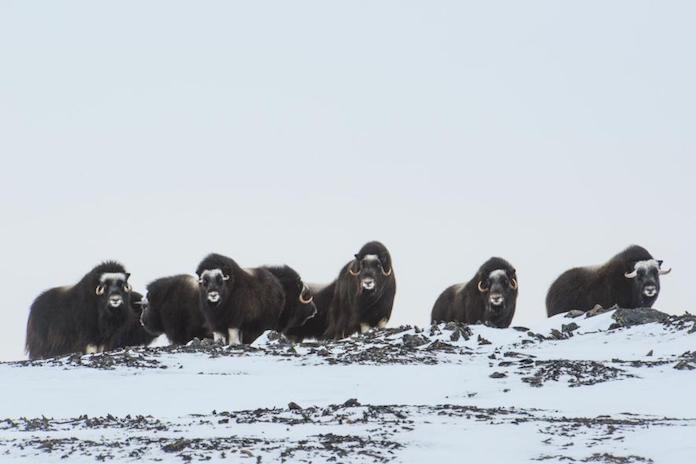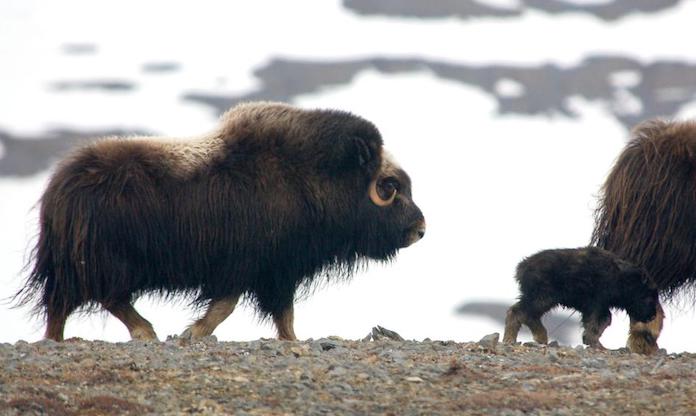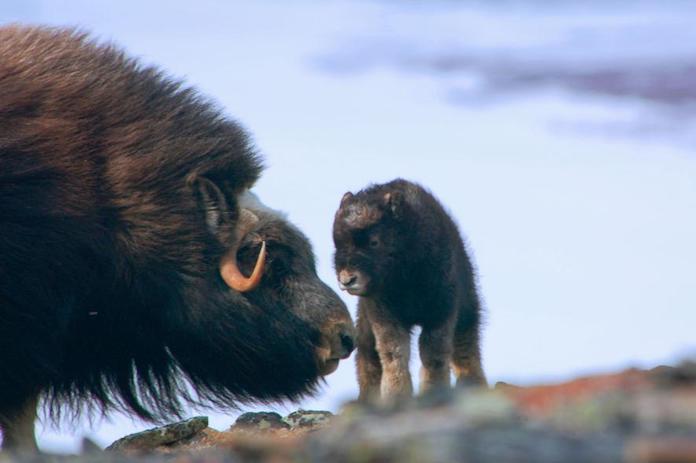
In the Arctic, a drastically different climate means glaciers, snowfalls, and ice floes are shrinking. So are the muskoxen.
The muskox is a massive creature – between 400 and 900 pounds when fully grown – with a shaggy coat and a big set of horns. Unlike caribou, Arctic muskoxen don’t migrate long distances in search of food, so they’re one of the animals most susceptible to a rapidly and dramatically changing climate.
A new study published in Scientific Reports found that muskoxen are shrinking; literally being born smaller as pregnant mothers struggle to find enough to eat.

The oxen eat plants that are usually covered in snow during winter in the Arctic, and they use their hooves to paw through the snowpack and reach the food below. As temperatures rise, though, precipitation that typically falls in the form of snow has turned to rain. The soaked ground freezes, trapping vegetation under an impenetrable sheet of ice.
When the mothers can’t get enough to eat, their babies pay the price. They’re born with smaller heads and don’t grow as large in adulthood. A smaller stature can lead to poor health and a shorter lifespan, which spells trouble for the future muskox population.

Joel Berger, a professor at Colorado State University and a senior scientist with the Wildlife Conservation Society, led a team of researchers that observed the muskoxen from up close, enduring freezing temperatures and extreme weather. Berger told National Geographic’s Craig Welch that muskoxen have been under-studied in comparison to other Arctic animals, like polar bears, but that their plight demonstrates the struggle to survive many species face in a warming world.
“Most people know polar bears are in trouble, but they don’t really make the connection that the warming that’s happening offshore is also happening onshore,” Berger told National Geographic. “These extreme weather events that have their genesis in warming temperatures are now impacting animals on land.”




